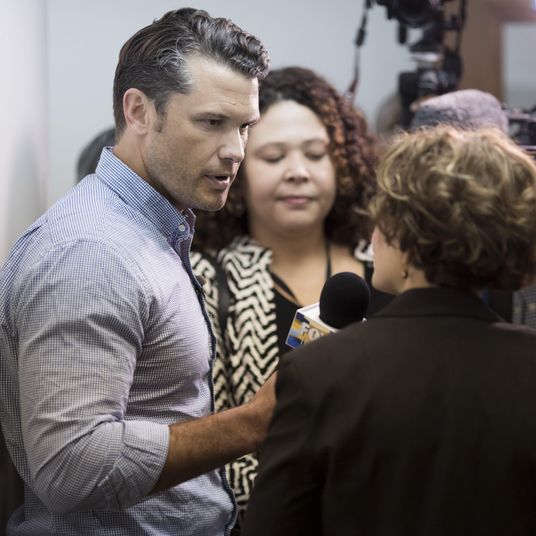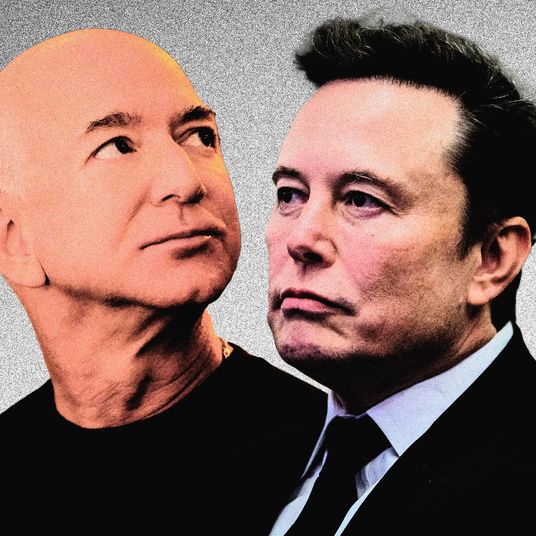Earlier this month, a group called Climate Defiance burst into an address by West Virginia senator Joe Manchin and drowned it out with chants denouncing his support for the Mountain Valley Pipeline. Disrupting the panel was very much the point of the protest. “Activists Shut Down Manchin Talk at D.C. Event Over Climate Destruction, Mountain Valley Pipeline,” reported Democracy Now! excitedly. “We just fully shut down Senator Joe Manchin’s keynote address,” exulted Climate Defiance on Twitter. “He is shoving a 2,000,000,000 cubic-foot-per-day fracked gas pipeline down our throats.”
The “shoving down our throats” formulation is a familiar one. Usually, it is used by conservative groups to complain about Obamacare, fiscal stimulus, or other liberal legislation. The utility of this term of art is that it renders legitimate exercises of legislative democracy illegitimate and even violent — by passing laws, they are shoving something down our throats, an act that feels like a violation of our rights, even if we cannot articulate exactly how.
Whether or not you think the pipeline makes sense, Manchin got it through democratic channels: The House and Senate included it in a bill that passed both chambers by wide margins. But one thing the protest brought to the surface is that corners of the left have a different definition of democracy. Or, to put it more sharply, they don’t fully believe in democracy.
“How did he win this? It’s because he takes the most money from fossil fuel corporations,” complained Climate Defiance activist Rylee Haught. “23 days I hunger striked because we did everything we’re supposed to. I knocked on thousands of doors, I spoke to hundreds of West Virginians! I did everything I was supposed to.”
The confusion revealed by these remarks is that she believes she is not only entitled to engage in attempts at political persuasion but also to win. The fossil-fuel infrastructure issue has brought this belief to the surface. A large segment of the climate movement has settled on blocking fossil-fuel infrastructure as their central strategy for reducing greenhouse-gas emissions.
They have calculated that their best route to achieving this objective is to mobilize groups of activists, which they present as representing the authentic beliefs of local communities, especially minorities. Those activists can then mobilize to attend local community hearings and block fossil-fuel infrastructure.
One problem with this strategy is that the activists do not actually speak for the communities they claim to represent. They represent the beliefs of their funders. This is a dynamic progressives had an easy time understanding when the grassroots activists were the tea party and their funders, say, the Koch brothers.
In Alaska, climate groups pushed hard to block the Willow oil project, but it had the backing of the Alaska Federation of Natives, the state chapter of the AFL-CIO and other unions, and Representative Mary Peltola. The Washington Post has a report from Louisiana, where climate activists are opposing a new project to build new carbon-capture facilities. The project has support from the state’s governor, John Bel Edwards, and from Leroy Sullivan, the mayor of the town where the new project will be located. But Sullivan’s support, the Post notes, “puts him at odds with national leaders of the environmental justice movement.”
A second problem with the fetishization of community input is that it grants power to people with the strongest beliefs, rather than simply assume elected officials can best represent their constituents. Tea-party protesters swarmed town-hall meetings and denounced health-care reform in 2009, but liberals rightly chose not to treat “community input” as an important element of the democratic process.
There is a strain of thought on the left that holds that activists ipso facto represent the people. Democracy, therefore, means deferring to the wishes of the activists, even if elected officials chosen by the people don’t agree with their position.
Matthew Yglesias, in a column arguing that community meetings dominated by a tiny number of interested residents and professional activists are not more democratic than decisions by elected legislatures, notes that progressives have a favorite slogan that appears at nearly any protest: “This is what democracy looks like!”
I think this line is useful to activists because it has two quite different meanings that appeal to different strands of progressives. To a liberal, it simply means that democracy entails a right to public protest. A protest is what democracy looks like because democracies include rights like freedom of speech.
To a radical, however, a protest is not merely a protected right within democracy but its highest form. Real democracy is advanced through direct action, which can involve either peaceful or violent protest. The protesters represent a vanguard of the people, and their organized activation of suppressed grievances represents the culmination of democracy. Protest cannot merely supplement elected representation but supplant it.
I am not trying to suggest the climate-justice movement is inherently undemocratic. But there are distinct elements of undemocratic thought mingled into it. Democracy is not the same thing as your side getting its way. The tea-party era featured a lot of rhetoric from passionate activists convinced that democracy required their side to win because they represented some form of the public will that superseded the election results. Sometimes, elected representatives defying angry activists who claim to represent the people, and shoving a law down their throats, is what democracy looks like.





























